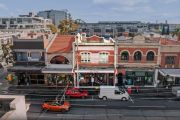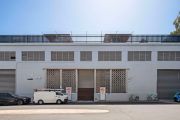
Sydney developers face losses in 2016, says real estate agent
Sydney apartment developers could run into trouble in 2016 as investors elect to walk away from their deposits, according to well-known Sydney estate agent Douglas Driscoll.
“In 2015, we saw a lot of developments granted planning permission but I think heading into 2016 we will see them feel a bit of pain because some purchased their sites on such narrow margins,” said Mr Driscoll who heads real estate network Starr Partners.
“As market levels fall away slightly, some developers might struggle to cover costs.
“Towards the end of 2016 we might start to see some investors potentially walk away from their deposits because they perceive that they paid too much for it in 2015 and see that it’s no longer worth the risk,” he said.
He added that changes to lending rules due to recently introduced macro-prudential measures would make it difficult for buyers to complete their off-the-plan purchase.
“Going into 2016, mortgage lenders will start freezing out investors, as lenders actually don’t have an obligation to provide the finance. They will simply say that they can’t provide the finance on the original terms (say, a five per cent deposit) and that now much more is needed,” he said.
Mr Driscoll said 2016 would be dominated by Chinese developers, who would “aggressively market their [Sydney] developments in mainland China.”
His comments follow warnings from John McGrath, following the faltering float of his real estate business on Monday, that buyers from mainland China were turning away from Sydney and Melbourne and looking at southeast Queensland where home values are “compelling”.
On Monday, shares in McGrath Limited fell 12 per cent from their IPO price on the first day of trading, providing an indication of falling investor confidence in relation to the Sydney market, where McGrath has the majority of its offices.
In November, Sydney dwelling values fell 1.4 per cent in November to a median value of $810,000, according to CoreLogic RP Data figures with Sydney’s annual dwelling price growth rate moderating from 18.4 per cent in July to 12.8 per cent in November. Over November, Sydney auction clearance rates were below 60 per cent.
“Tighter mortgage servicing criteria across the board and affordability constraints in the Sydney and Melbourne markets are also having an impact on market demand,” said RP Data’s Tim Lawless.
Mr Driscoll said he did not expect price falls in 2016 but envisioned a continued decline in investors coinciding with an increase in owner occupiers.
“This is a very good long-term thing as it helps the market have a healthier balance,” he said.
A November survey by comparison website finder.com.au of 33 property experts and economists, found that 58 percent predicted property prices to rise next year, while 29 percent believe prices will fall.
AMP Capital chief economist Shane Oliver, one of those surveyed, said he expected house prices to keep rising in 2016, but expected “their rate of increase to slow significantly.”










